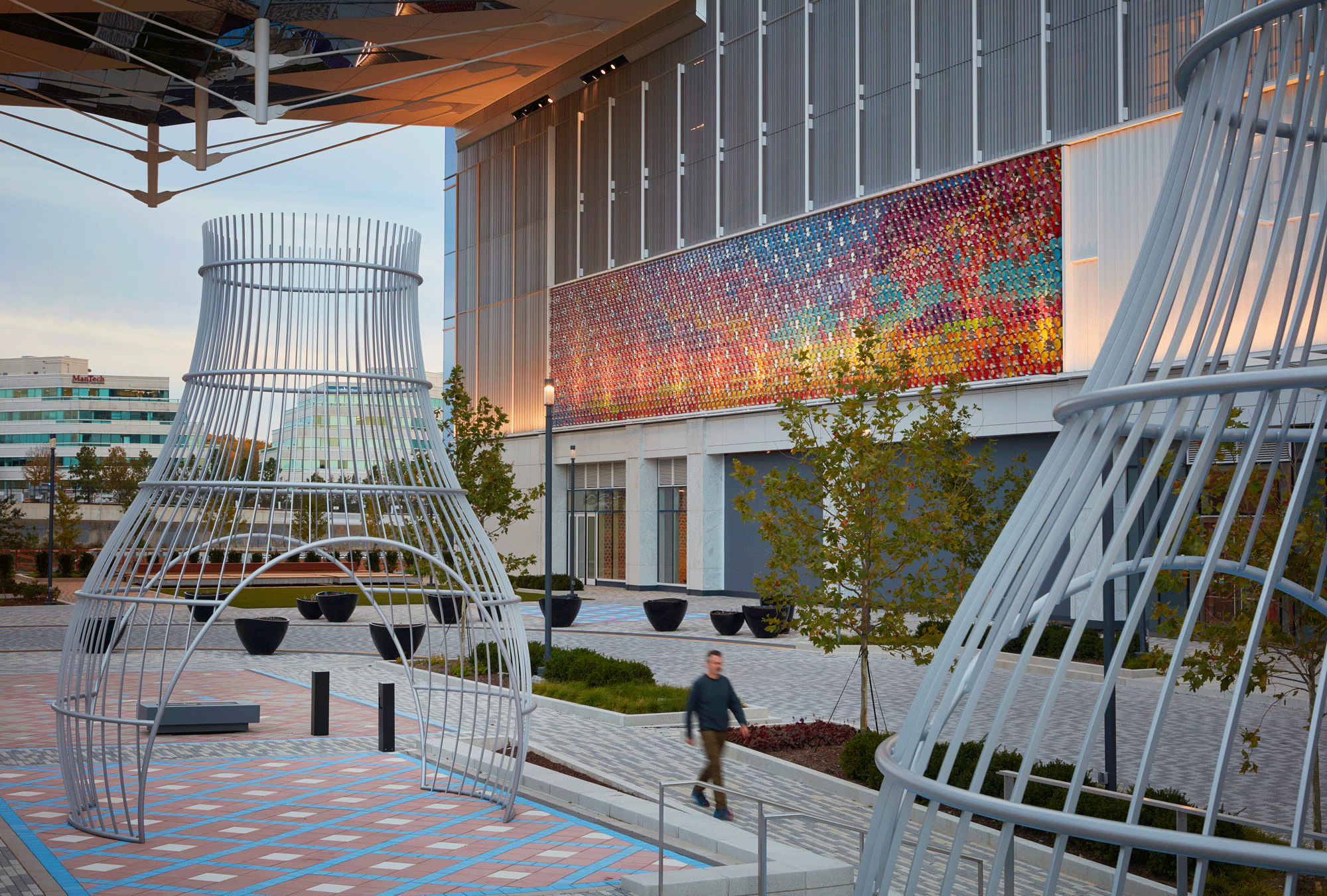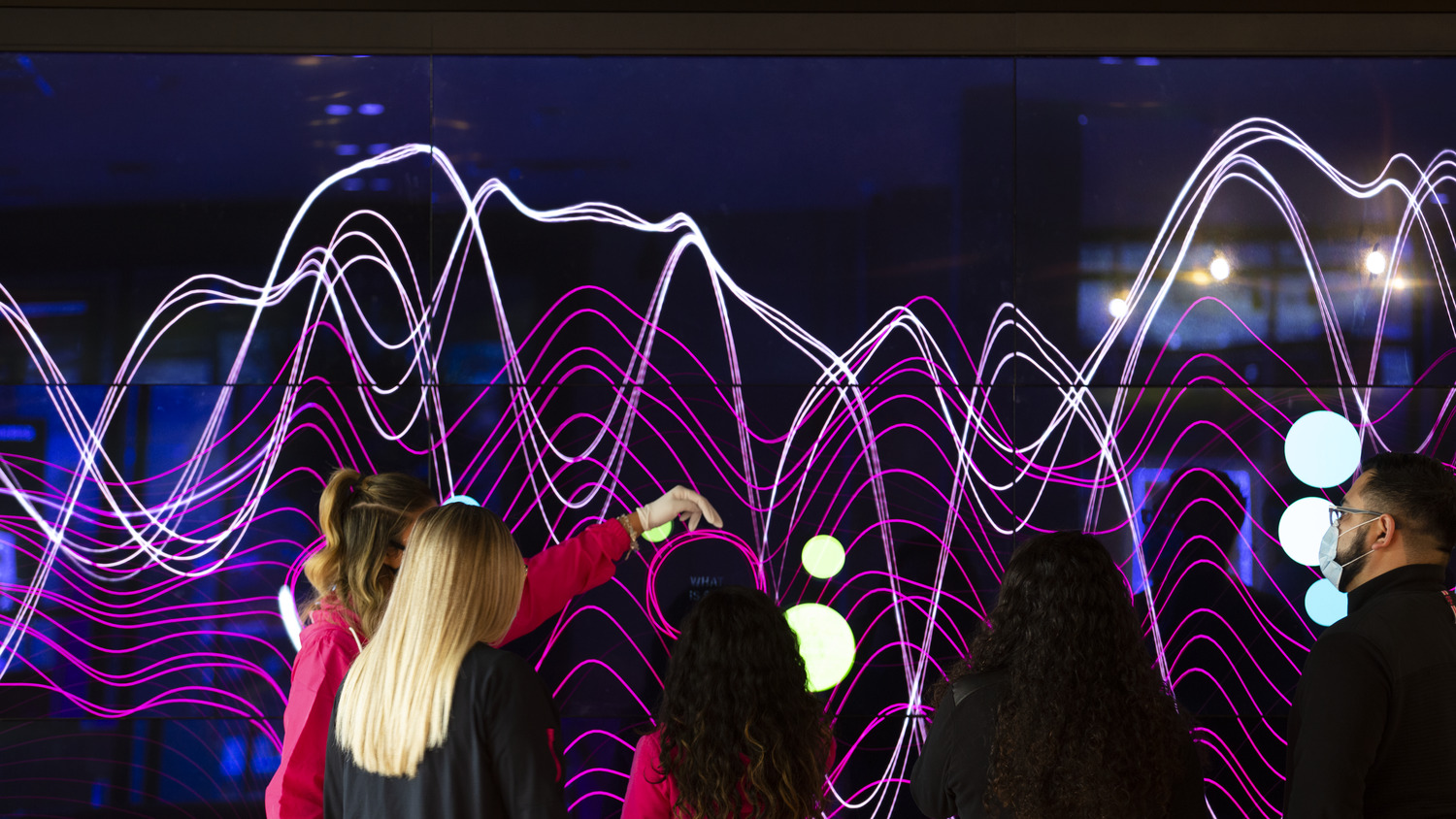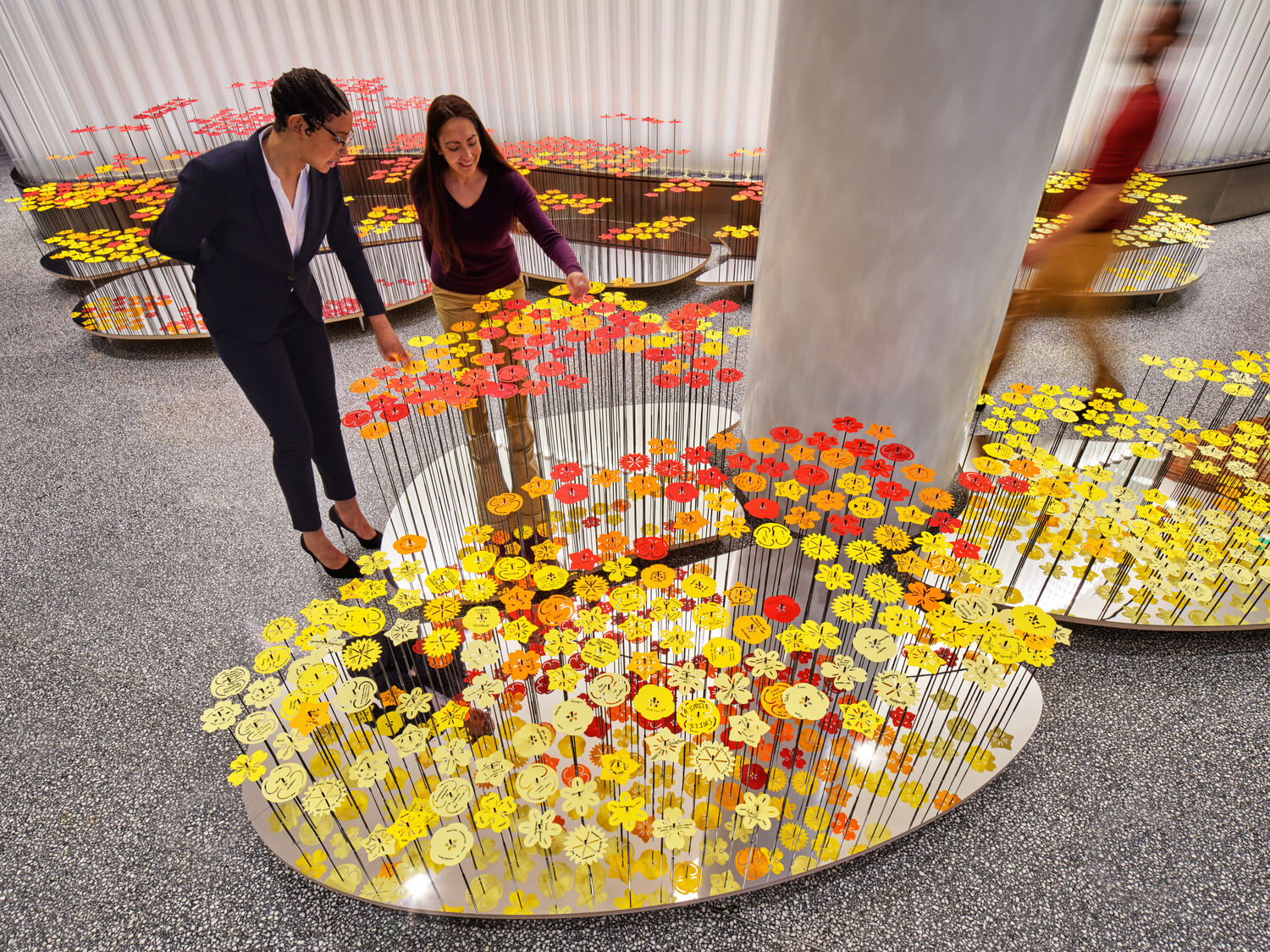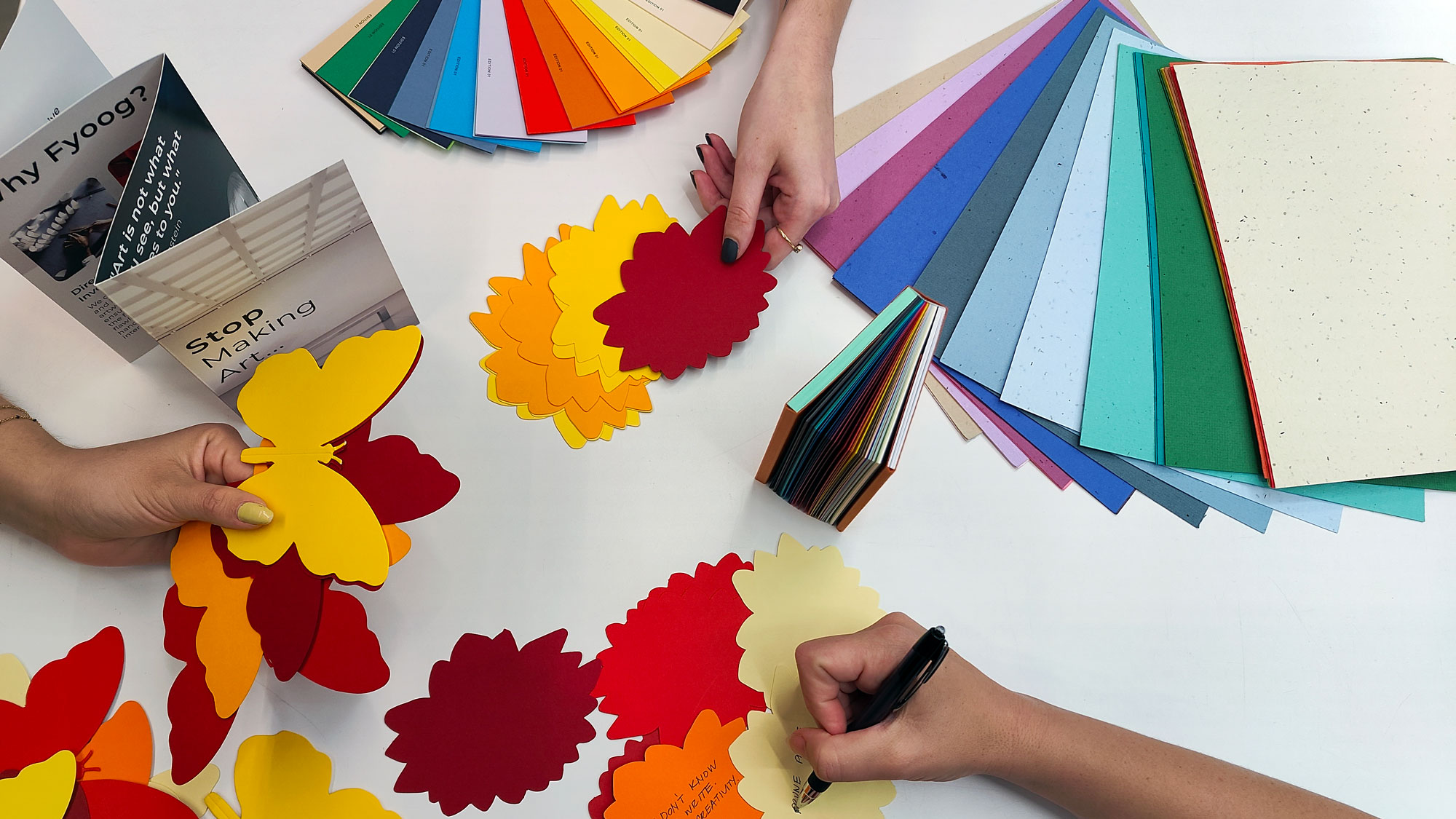Full-Spectrum Participation: Designing Art for Every Engagement
Britni Harvison, Creative Director | FYOOG, an IA Company
Participatory art—creative experiences intentionally designed to involve audiences at varying degrees of engagement—is increasingly valued by organizations seeking to foster meaningful connections, spark dialogue, and inspire innovation within their organizations for employees, clients, and/or the community. Yet, successfully achieving these impacts depends heavily on recognizing and designing for the different ways people naturally engage with art. Not everyone is inclined to actively participate as an artist, and it is essential to embrace this reality.
Effective participatory art experiences resonate deeply and inclusively when designed to accommodate multiple engagement styles — from quiet observers to casual contributors to enthusiastic creators. As an example, during IA's 40th-anniversary celebrations in 2024, we at FYOOG (an IA company focused on creating large-scale interactive art installations and commercial renovations) partnered with IA to create Fleurish. This project, drawing on multiple engagement styles, used recycled paper flowers denoting growth, hope, and collective purpose as symbols of shared intentions. Each flower was inscribed with a personal message crowd-sourced during anniversary celebrations with clients at IA studios. Through our work with participatory art, we have learned firsthand that thoughtfully providing multiple engagement pathways (outlined below) allows diverse audiences to feel valued, included, and inspired to authentically participate in the creative process at their personal comfort level.
The Problem with a Single-path Approach
Participatory art experiences are proliferating precisely because they foster meaningful connections, spark dialogue, and reflect collective identities in ways traditional art forms often cannot. This is because traditional art typically positions the artist as the sole creator and the audience as a passive observer, which can make the experience feel distant or inaccessible, especially for those seeking a sense of agency or community.
Still, participatory art is not automatically inclusive. When it assumes a single pathway approach — usually deep and involved— it can unintentionally alienate those who prefer lighter engagement or passive observation. This oversight results in missed opportunities to create meaningful connections.
Based on our work designing participatory art installations, we have identified three distinct levels of experiential participation— passive observation, light interaction, and deep creation — to thoughtfully address diverse audience needs. In addition, each project should begin with a structured discovery phase combining audience surveys, stakeholder interviews, observational research, and benchmarking. This audit process ensures that the participatory art experience will authentically reflect the varied preferences and comfort levels of the intended audience.
Three Levels of Experiential Art Participation
1. Passive Participation (Observation)
Passive participants appreciate art from a distance, reflecting internally rather than engaging externally. They may even experience profound emotional or intellectual connections simply by observing and absorbing the scenario. This level respects an individual’s desire for privacy while providing enriching sensory experiences.

Where Land Meets Sky, a custom sculpture by FYOOG
2. Light Participation (Interaction)
Light participants engage through simple interactions that require minimal commitment or exposure. Examples include leaving a quick personal note, briefly rearranging movable elements, or contributing anonymously. Such interactions invite these participants to add their voices gently and without pressure, creating a sense of belonging without overwhelming their comfort zones.

T-Mobile Experience Store, designed by IA Retail
3. Deep Participation (Creation)
Deep participants seek hands-on involvement, actively shaping the artistic experience. They enjoy collaborative processes, workshops, and opportunities to significantly influence the artwork’s final form. By offering these immersive experiences, participatory art harnesses participants' deep enthusiasm and creativity, resulting in richer and more dynamic outcomes.

Fleurish by FYOOG. This project drew on multiple engagement styles, used recycled paper flowers denoting growth, hope, and collective purpose as symbols of shared intentions.

Adding Nuance: Recognizing the Complexity of Innovation
Effective participatory art and genuine innovation do not arise from simply bringing people into a creative or collaborative setting. Instead, authentic innovation thrives in environments deliberately crafted to respect and nurture individual preferences, interaction styles, and comfort levels. For some, open-ended, loosely structured experiences ignite creativity and breakthroughs; for others, such settings cause anxiety or inhibit their best thinking. A balanced, intentional approach to participation, which includes clear pathways for various engagement intensities, ensures that innovation is inclusive, authentic, and sustainable.
Relevance
In the current diverse corporate, retail, or hospitality landscapes, creating environments that foster inclusivity and engagement is critical. Businesses seeking to enhance workplace culture, stimulate innovation, or engage customers must understand that varied engagement strategies yield more profound and widespread results. Participatory art that allows employees/clients to engage according to their preferences encourages openness, collaboration, and creativity, ultimately translating into stronger relationships, better ideas, and increased satisfaction.
Organizations aiming for authentic innovation will embrace nuanced approaches carefully, designing interactions and engagement levels that reflect complex human behavior rather than simply emphasizing the organization’s taglines and slogans. To identify what works best for them, they should actively experiment with different participation models, gather ongoing feedback through surveys or interviews, and evaluate outcomes against clearly defined objectives. Over time, this iterative approach will clarify the most effective methods of engagement tailored specifically to their unique culture and goals.
Conclusion
Designing art experiences for full-spectrum participation ensures that every individual, regardless of their preferred interaction style, feels acknowledged, valued, and engaged. By thoughtfully crafting experiences for passive, light, and deep engagement, participatory art becomes accessible, inclusive, and genuinely meaningful. By embracing diverse modes of participation and acknowledging nuanced human dynamics, organizations not only enrich their environments but also empower all participants to connect authentically with art.

